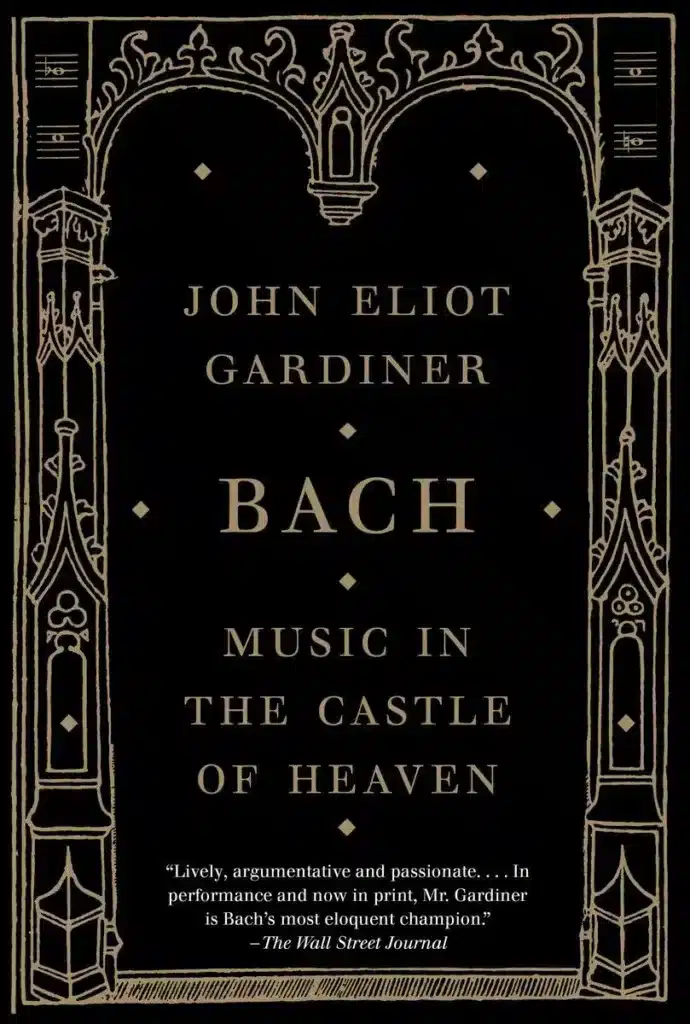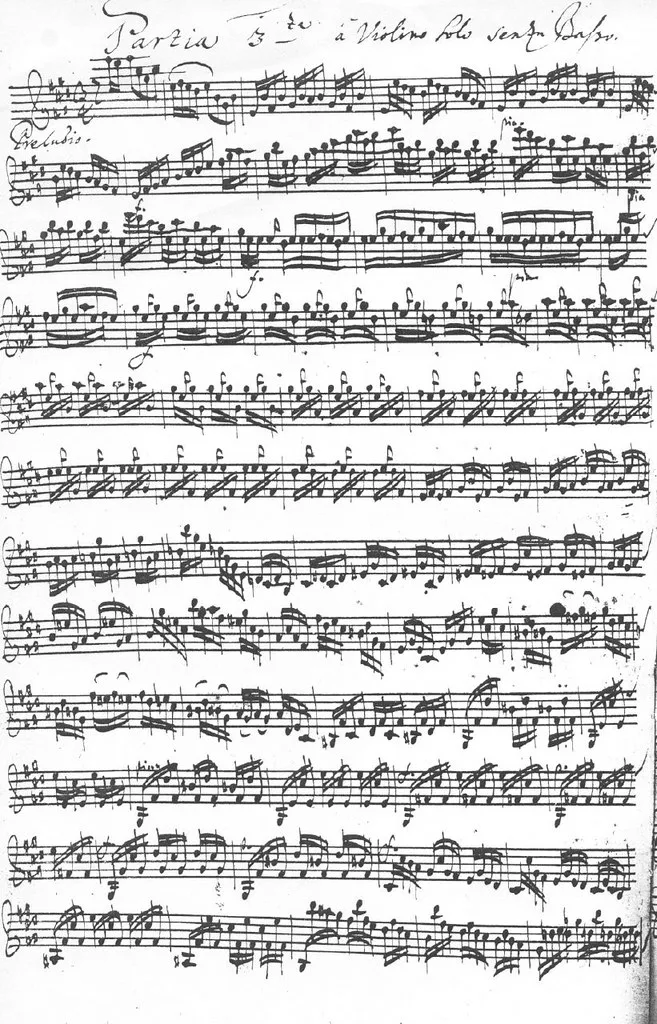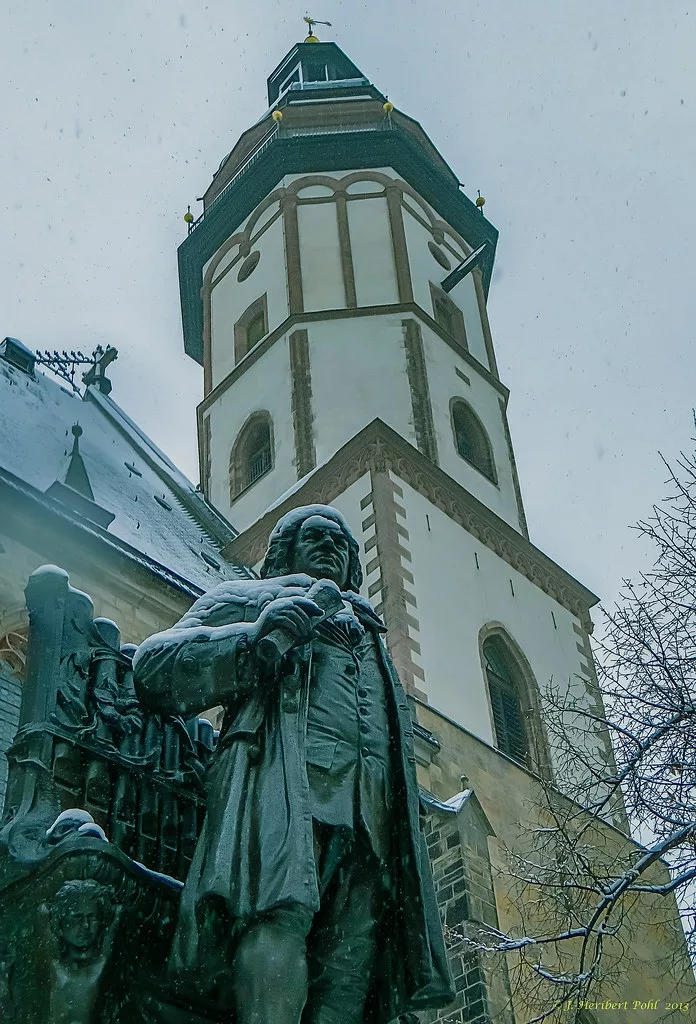When one wishes to talk about Bach (1685 – 1750), there are only two possible strategies: the first, laconic, is limited to the epithet “Absolute Master of Polyphony.” The second, on the contrary, requires hundreds of pages containing details about his background, youthful experiences, vicissitudes, his edgy character, major works, and so on. John E. Gardiner, in his book Music in the Caste of Heaven, clearly chose the latter path, producing a monumental work, to say the least.

That Bach has always been a ubiquitous figure in the pantheon of great composers of the past is a fact known to most. However, the reasons are not always clear. One thinks of the name, and how many times it has been repeated, perhaps one remembers a famous song (such as the famous Aria on the Fourth String), and that is enough to dismiss the matter.
But this, in addition to not doing Bach justice, ends up precluding any possibility of discovery for those who, more or less interested in music, truly wish to gain knowledge that is certainly not exhaustive, but certainly not superficial. The composer’s main “fault” is that he was exceptionally prolific, having left more than a thousand works to posterity, a number that would certainly be greater if so many manuscripts had not been lost or even used to light the fireplace.
First, it is good to understand in what historical period Bach formed and composed his music. Born in 1685, he fully embraced the spirit of the late Baroque, avoiding the countless disputes that saw the Italian and French schools clash repeatedly over which approach was the most elegant. If the Venetian school (and the Italian school, in general) favored virtuosity, embellishments, and the most daring polyphonic contortions, the French school, whose greatest representative is surely Rameau, wished to honor sobriety, avoiding all those complications considered by some even vulgar.
However, it is fair to point out that despite Puritan “evangelization” efforts, Italian music (in particular, operas in their early days) attracted much more than French music and found many supporters from beyond the Alps. On the other hand, the German school had always shown an openness to different influences that, once received, flowed into a musical heritage that could be drawn on depending on the specific compositional circumstance.
Bach can be framed exactly as the prototype of the German musician who, having by now the works of his major European colleagues at his disposal, disdains nothing and, indeed, draws cues from each work, memorizing them indelibly and always keeping them ready for when the need arose to render musically a particular context.
Moreover, if the Roman Catholic Church, while appreciating music, did not have a marked interest in its development (as opposed to the visual arts), the influence of Lutheran thought made the Protestant church a receptacle for sacred composers, dedicated throughout their lives, to liturgical service. Indeed, Luther himself extolled singing, regarding it as a “multiplier of prayer,” and he wrote texts intended for Sunday worship.
Bach, educated in a strongly Lutheran environment, could only assimilate this approach to religiosity, himself becoming part of his parish choir and an admirer of the intricate choral polyphonies that resonated in the large church space. His destiny was sealed from birth: he would honor the family tradition (the Bachs were known to all as musicians) by bringing harmonic polyphony to the noblest of forms while becoming a “humble” (a blatant oxymoron, in that Bach was not humble at all) servant of God.
While not going into historical details (for which I refer to Gardiner’s aforementioned book), it is sufficient to recall his intention to compose for two consecutive years a cantata for every Sunday and feast day of the liturgical year. To understand how arduous and nerve-racking this work could have been, it is necessary to imagine life in the early 1700s, with no means of fast printing, nor electric light or recorders.
Mass was celebrated every Sunday (whose average duration of about four hours today would discourage even the most devout), consequently, Saturday was devoted to rehearsals. Therefore, Bach had five days to think, structure, and elaborate the next cantata and, what is more, he was also often forced to pay attention to the copyists (students, children, and wife) who prepared the scores from the complete score.

It is good to point out (for those unfamiliar with them) that a Bach cantata has an average duration of twenty minutes and is divided into instrumental parts, chorales, arias, duets, and recitatives. All, of course, in the service of a text that recalled the Sunday gospel. If we then add that Bach, an absolute master of harmony and polyphony, constructed interweavings of voices and instrumental timbres in every movement, one can easily imagine how arduous the task was before him. Not surprisingly, he would occasionally “recycle” a secular work and repurpose it into the context of a cantata (for example, the prelude of the violin partita BWV 1006 is also transcribed for lute, BVW 1006a, and used in the opening symphony of the cantata BWV 29).
D’altrande, Bach’s skill also consisted of being able to treasure his achievements and never “file” anything away. In the cantatas, you will find jigs, currents, sarabandas, and all sorts of dances typically placed in the context of the suites. Why think that sacred music should always seek a character of solemnity? The most important element was the theme (and thus, the text), which Bach assimilated deeply to make his music a true artistic theology.
But Bach did not limit himself only to sacred music. His efforts found application in every sphere, and even the simplest contexts (such as, for example, popular melodies) were ennobled by his talent. Of course, as is often the case, Bach also found his favored form, and while for Beethoven it was certainly the sonata form which he elaborated relentlessly until his death, for the Leipzig composer, it was the fugue.
Bach was not only capable of composing fugues with four, five, and even six subjects, but he could do it so well that he could even improvise on the harpsichord on a theme provided to him on the spot. Escapes exist almost everywhere, in both sacred and secular settings, and their use is always apt.
Whenever it was necessary, for example, to render musically a dialectical relationship (e.g., between Jesus and Peter), Bach referred to the fugue, with an extraordinary ability to weave the interweaving between the voices (sometimes engaged in a duet with basso continuo) and to place the emphasis now on one verse, now on another, until reaching the completion, the moment when the first subject “comes out,” with the affirmation of a harmony that could not help but make one think of the inseparable Trinitarian relationship.
At the end of his days, in the Art of the Fugue (BWV 1080), Bach condensed his mastery, starting with a very simple theme and reworking it several times, always in different ways, but with an ability to blend dissonances and consonances within a harmonic carpet that delights the hearing of even the least experienced. No wonder then that classical composers, starting with Beethoven and Mozart, while choosing a different musical approach (the origins of which can be attributed to Bach’s son Carl Philipp Emanuel), saw Bach as a “spiritual father” whose legacy represented their hidden treasure.
In conclusion (but I will return to this topic several times, given my love for this music), I can only invite all music lovers to the very pleasant reading of the text by J. E. Gardiner and, above all, to listen methodically to Bach’s works, starting with the most famous cantatas (such as the sublime BWV 147), then moving on to the Passions (according to Mark and John) and, last but not least, to the partitas, suites, concertos and the cornerstone of piano training (even though today’s piano, with its perfection and dynamic possibilities, did not yet exist), the Well-Tempered Clavier (BWV 846-893).
Very short biography of Johann Sebastian Bach
Johann Sebastian Bach (1685 – 1750), a major German composer of the Baroque period, left a vast musical legacy that continues to inspire and fascinate audiences around the world. Born in 1685 into a family of musicians, Bach’s prolific output includes more than 1,000 compositions ranging from sacred choral works to solo keyboard pieces.
Among his most important musical works is the Brandenburg Concertos, a collection of six instrumental concertos that showcase Bach’s mastery of counterpoint and orchestration. The “Well-Tempered Clavier,” a two-volume series containing preludes and fugues in all major and minor keys, is also considered a milestone in keyboard literature.

Bach’s “Mass in B Minor” is one of the greatest choral works ever composed, blending intricate polyphony with deep spirituality. His “Passion According to Matthew” and “Passion According to John” are revered for their emotional depth and musical richness, solidifying Bach’s reputation as a master of sacred music.
Through his innovative compositions and technical brilliance, Johann Sebastian Bach’s music continues to influence and inspire musicians and listeners, solidifying his place as one of the greatest composers in history.
If you like this post, you can always donate to support my activity! One coffee is enough!

